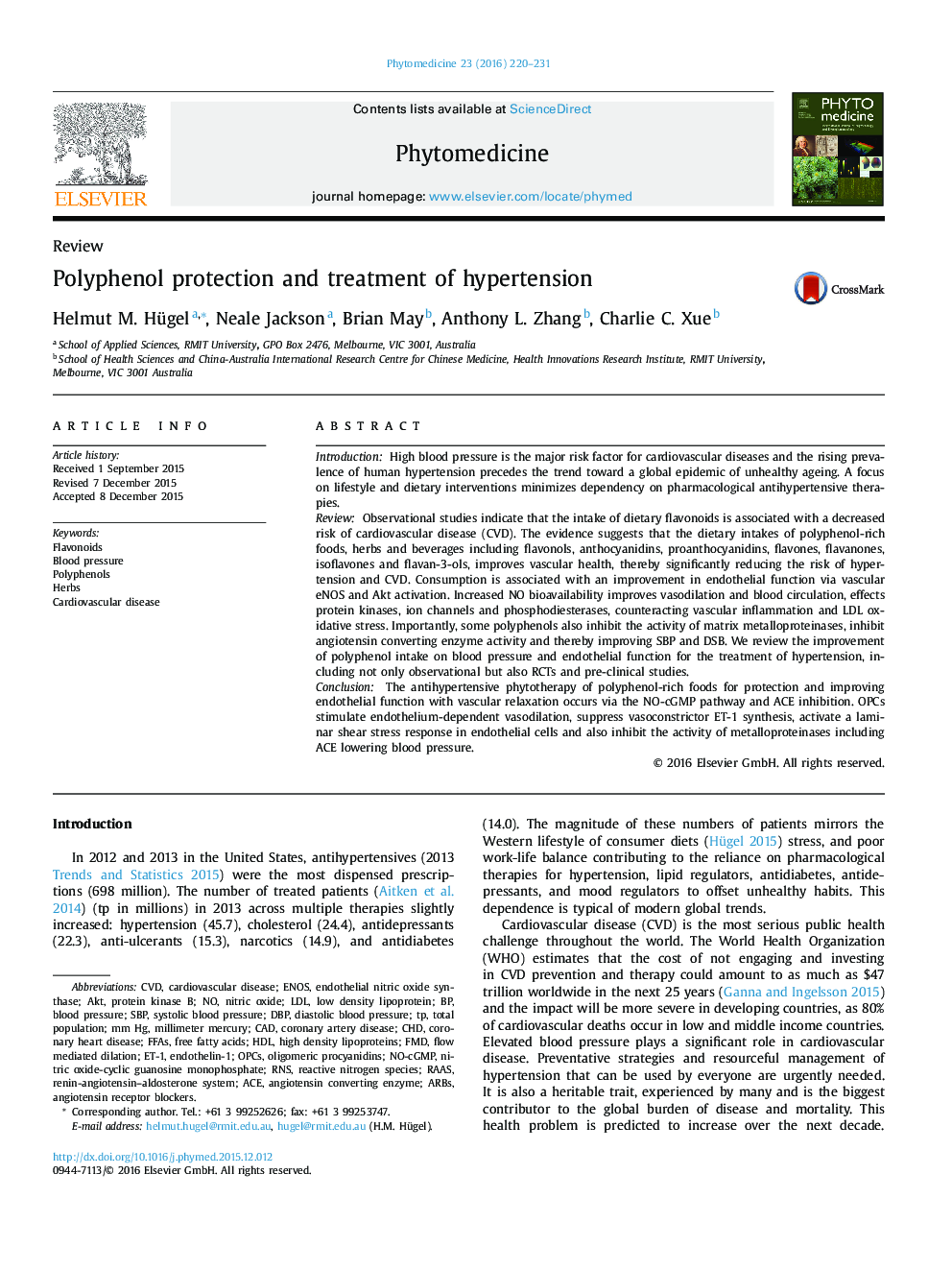| Article ID | Journal | Published Year | Pages | File Type |
|---|---|---|---|---|
| 2496376 | Phytomedicine | 2016 | 12 Pages |
IntroductionHigh blood pressure is the major risk factor for cardiovascular diseases and the rising prevalence of human hypertension precedes the trend toward a global epidemic of unhealthy ageing. A focus on lifestyle and dietary interventions minimizes dependency on pharmacological antihypertensive therapies.ReviewObservational studies indicate that the intake of dietary flavonoids is associated with a decreased risk of cardiovascular disease (CVD). The evidence suggests that the dietary intakes of polyphenol-rich foods, herbs and beverages including flavonols, anthocyanidins, proanthocyanidins, flavones, flavanones, isoflavones and flavan-3-ols, improves vascular health, thereby significantly reducing the risk of hypertension and CVD. Consumption is associated with an improvement in endothelial function via vascular eNOS and Akt activation. Increased NO bioavailability improves vasodilation and blood circulation, effects protein kinases, ion channels and phosphodiesterases, counteracting vascular inflammation and LDL oxidative stress. Importantly, some polyphenols also inhibit the activity of matrix metalloproteinases, inhibit angiotensin converting enzyme activity and thereby improving SBP and DSB. We review the improvement of polyphenol intake on blood pressure and endothelial function for the treatment of hypertension, including not only observational but also RCTs and pre-clinical studies.ConclusionThe antihypertensive phytotherapy of polyphenol-rich foods for protection and improving endothelial function with vascular relaxation occurs via the NO-cGMP pathway and ACE inhibition. OPCs stimulate endothelium-dependent vasodilation, suppress vasoconstrictor ET-1 synthesis, activate a laminar shear stress response in endothelial cells and also inhibit the activity of metalloproteinases including ACE lowering blood pressure.
